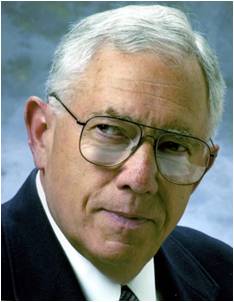Plenary Talk by Dr. Judah Levine
Monday, April 13th, 9:30 AM
"Don't tell me how to build a clock; just tell me how to find out what time it is."
Distributing Time and Frequency Information:
A Users’ Perspective and Expectation in a Connected Society

Judah Levine
Time and Frequency Division
National Institute of Standards and Technology
Boulder, Colorado
[email protected]
I will discuss methods that are used to distribute time and frequency information from the perspective of the end-user. I will compare the accuracy that can be realized by means of several different methods including one-way, common-view, and two-way. I will demonstrate the capability of each of these methods with specific examples, and I will discuss how the time and frequency data that they produce can be used to control and synchronize a local clock or frequency standard. I will briefly discuss the legal and technical requirements that are important for commercial and financial institutions or, for any situation where certifying and validating the performance of a time system is an important consideration.
Judah is a physicist in the Time and Frequency Division of the National Institute of Standards and Technology (NIST) in Boulder, Colorado, and is a Fellow of JILA, the world-class joint research institute between NIST and the University of Colorado. Judah is also a NIST Fellow, a distinction reserved for the top 1% of NIST scientists. Judah received the IEEE IFCS I. I. Rabi award in 2013.
Judah’s research and metrology leadership spans many areas over a scientific career of more than 40 years, including spectroscopy and geodesy. Judah is probably best known for his scientific leadership in three areas:
• The development, operation, statistics and steering of complex time scales comprising ensembles of atomic clocks for the best possible realization of precision time of day.
• Pioneering and improving precision time and frequency transfer through telecommunications and GNSS satellites, including two-way satellite time and frequency transfer, GNSS common-view transfer, and GNSS carrier-phase transfer.
• Pioneering new methods of network time transfer, including the NIST Internet Time Service, automatically synchronizing clocks in computers and networked devices.
Judah’s work has direct impacts on the United States technology infrastructure and its economy. Judah’s Internet Time Service (ITS) now provides more than 10 billion automated synchronizations per day, and is built into commercial operating systems such as Windows, Mac, and commercial Linux. In the United States, ITS is the primary source for legally required time stamping of electronic financial transactions, including hundreds of billions of dollars of trade each day on the New York Stock Exchange, NASDAQ, and American Stock Exchange.
